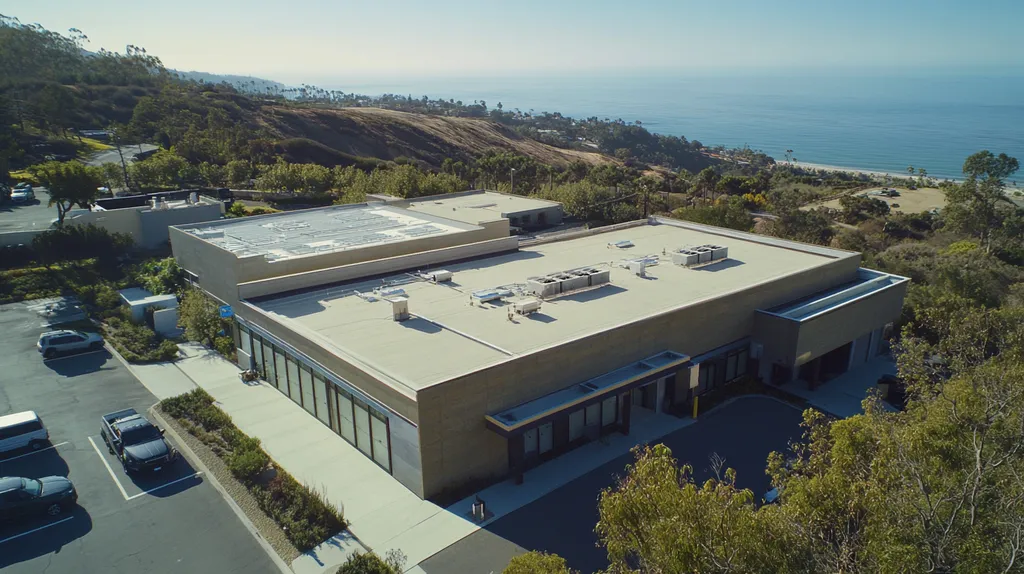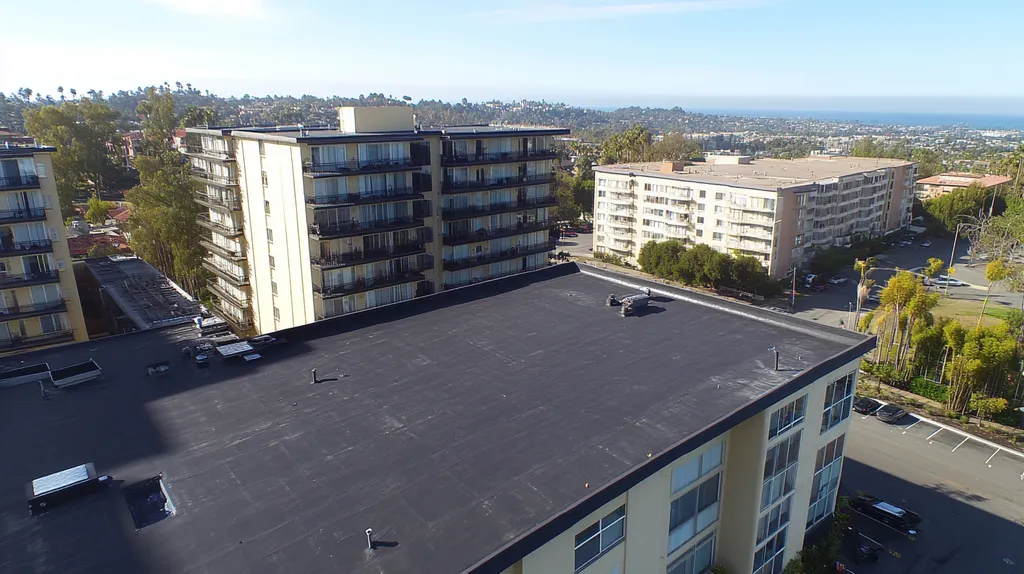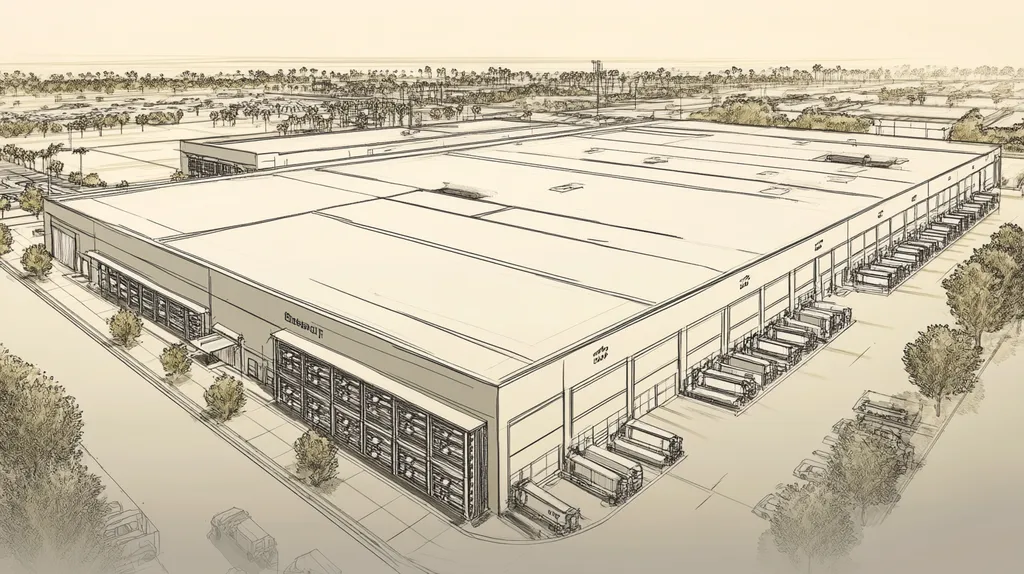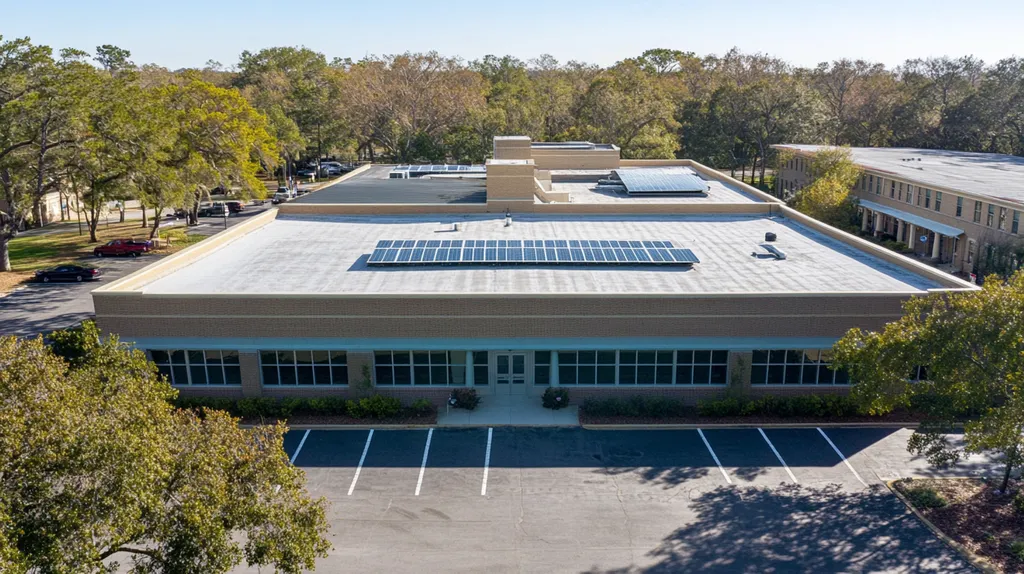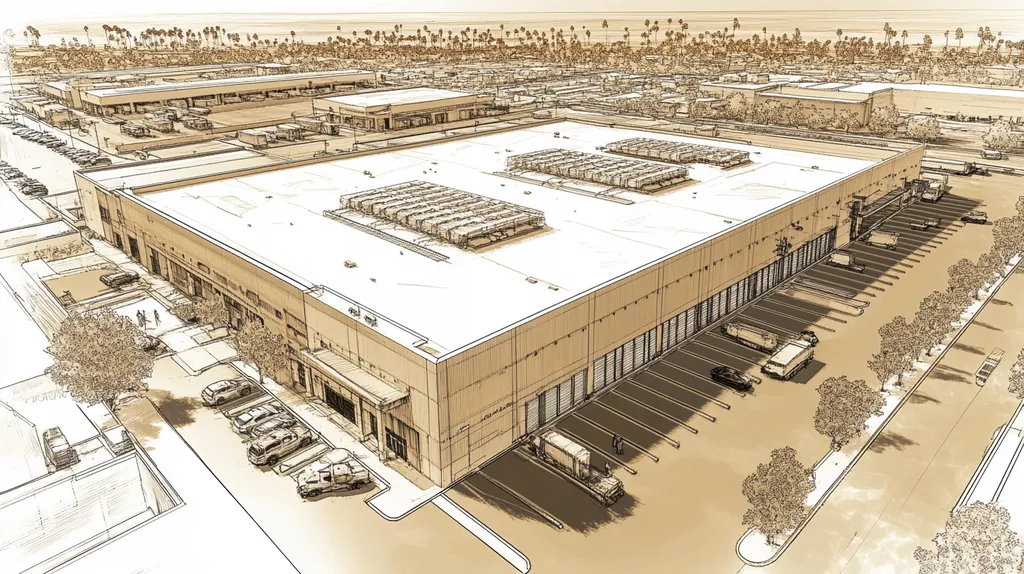In today’s industrial settings, over 40% of commercial roofs fail prematurely due to inadequate protective coatings, resulting in billions in repair costs annually. For facility managers, selecting and maintaining the right protective coating system isn’t just about prevention—it’s a critical investment decision.
Modern coating technologies offer unprecedented protection against UV damage, chemical exposure, and moisture infiltration. However, navigating the complex landscape of coating options, application methods, and compliance requirements poses significant challenges.
This comprehensive guide equips facility managers with actionable strategies for optimizing protective coatings, from initial selection through long-term maintenance, ensuring maximum roof performance and ROI.
SECTION 1: PERFORMANCE FACTORS
Selecting the appropriate protective coating for industrial roofs is more than a routine maintenance task; it’s a vital strategic choice. Research indicates that roofs lacking adequate coatings can see their lifespan sharply reduced—by as much as 50%. For facility managers, grasping the key performance factors of these coatings translates into substantial cost savings and improved operational efficiency. This section delves into essential topics such as durability, energy efficiency, and waterproofing, equipping facility managers with actionable insights for smarter decision-making.
Durability and Lifespan
Durability plays a pivotal role in the effectiveness of protective coatings. Industrial roofs encounter harsh weather extremes that can quickly wear down inferior coatings. Investing in high-quality coatings can significantly prolong a roof’s lifespan by safeguarding it against UV rays, moisture, and extreme temperatures.
A durable coating not only helps maintain structural integrity but also decreases the need for frequent replacements. For example, a roof receiving a premium elastomeric coating can remain functional for up to 20 years, while untreated roofs may require resealing every few years.
Facility managers should seek coatings that come with warranties of 10 years or longer. Such guarantees ensure the coating will perform effectively and shield the underlying materials from deterioration.
Key Action Items
Energy Efficiency and Heat Reflection
In today’s world of escalating energy costs, energy efficiency in industrial roofing is more crucial than ever. Reflective coatings can drastically lower cooling expenses by reflecting sunlight and reducing heat absorption. Research demonstrates that reflective roofs can cut cooling energy consumption by up to 30%.
Facility managers should prioritize coatings that have received ENERGY STAR certification. These products adhere to strict energy efficiency standards and can result in decreased utility bills. A reflective roof coating not only conserves energy but also enhances indoor comfort.
Additionally, reduced energy use aligns with sustainability objectives, benefiting a company’s environmental initiatives. By carefully selecting the right coating, facility managers can positively influence both their ecological footprint and their financial performance.
Key Action Items
Waterproofing and Corrosion Resistance
Waterproofing is an essential aspect of any industrial roofing solution, directly impacting the performance and longevity of the roof. Effective coatings create a reliable barrier against moisture intrusion, helping to prevent leaks and water damage that can jeopardize entire operations.
Corrosion resistance is especially vital for roofs situated in coastal regions or industrial areas where pollutants are prevalent. High-quality coatings can effectively combat rust and corrosion, thereby extending the roof’s lifespan significantly.
For instance, a roof treated with a urethane-based coating can handle substantial moisture without degrading. This level of protection can spare companies from expensive structural repairs and operational disruptions.
Key Action Items
SECTION 2: FINANCIAL CONSIDERATIONS
For facility managers, investing in protective coatings for industrial roofs is a decision with significant financial implications. A roof that is neglected can lead to pricey repairs or even early replacement. Studies show that failing to apply necessary coatings can increase maintenance costs by as much as 30% over time. Understanding the financial aspects of protective coatings is essential for making informed decisions that enhance the overall lifespan and performance of roofing systems.
Initial Cost and Installation Expenses
While the initial investment in protective coatings may seem high, viewing this as a proactive measure is essential. Costs can vary widely, typically ranging from $1 to $4 per square foot, depending on the materials used and the roof’s condition.
Investing in high-quality coatings can prevent future expenses. A well-installed coating system protects against environmental damage and minimizes the need for ongoing maintenance.
Facility managers should consider labor, materials, and potential downtime during installation when evaluating these costs. Ultimately, the initial expense is justified by the long-term savings achieved through enhanced roof protection.
Key Action Items
Long-Term Maintenance and Repair Savings
Protective coatings significantly reduce long-term maintenance needs. Well-maintained industrial roofs last much longer, translating to fewer repair interventions. Facilities that utilize protective coatings often experience maintenance costs decline by up to 50% over time.
These coatings act as a shield against harsh weather, UV rays, and other factors that speed up deterioration, allowing facility managers to allocate their budgets more effectively.
Many coating manufacturers also provide warranties on their products, further reassuring managers about the effectiveness of this proactive approach. While upfront costs can be high, the long-term savings on maintenance and repair expenses offer substantial financial advantages over the roof’s life cycle.
Key Action Items
Energy Cost Reduction and ROI
In addition to maintenance savings, protective coatings can substantially lower energy costs. Reflective coatings minimize heat absorption, resulting in reduced cooling expenses during warmer months. Facilities that implement these coatings have reported energy savings of up to 30%.
Calculating the return on investment (ROI) from energy savings is crucial. Often, the initial cost of coatings is quickly offset by lower energy bills, resulting in payback periods of under three years.
In climates with extreme temperatures, the advantages become even more significant. These coatings not only enhance comfort but also extend the lifespan of HVAC systems. By considering the financial impact of both energy savings and maintenance costs, facility managers can accurately assess the overall ROI from protective coatings.
Key Action Items
SECTION 3: COMPLIANCE REQUIREMENTS
Meeting compliance requirements for protective coatings is critical for facility managers. Ignoring these regulations can not only compromise the roofing system’s integrity but may also result in substantial fines, project delays, and serious safety risks. Understanding and adhering to relevant standards ensures informed decision-making regarding roof coatings.
Regulatory Standards for Roof Coatings
Compliance with national and regional regulations for roof coatings is essential to ensure safety and performance. Facility managers must be aware of standards set by organizations such as the Environmental Protection Agency (EPA) and the Department of Energy (DOE). Using coatings that do not meet required reflectivity standards can result in higher energy costs over time.
Moreover, specific industry regulations may dictate the appropriate materials for use depending on the facility’s location and type of operation. Working with a roofing expert familiar with these local regulations is key to avoiding costly penalties associated with non-compliance.
Staying current with regulatory standards not only protects against fines but also enhances the longevity and efficiency of the roofing system. Regular audits can ensure ongoing compliance and safeguard the facility from potential legal issues.
Key Action Items
Environmental and Health Safety Compliance
Choosing and applying roof coatings must prioritize environmental and health safety. Many coatings contain volatile organic compounds (VOCs) that can adversely impact air quality if not carefully managed. Facility managers should opt for low-VOC coatings that comply with local air quality regulations.
It is also crucial to examine safety data sheets (SDS) for each coating, as these documents provide vital information about safe handling and potential hazards. Ignoring these guidelines could result in workplace safety risks and liability issues for the facility.
Additionally, assessing the environmental impact of roofing materials is essential. Implementing waste reduction strategies during application can promote sustainability while ensuring compliance with environmental regulations, ultimately enhancing the facility’s reputation in the community.
Key Action Items
Building Code Adherence and Certifications
Understanding building codes is vital for facility managers to ensure roofing systems are designed, constructed, and maintained correctly. Failure to adhere to these codes can lead to costly penalties, including the potential need to remove non-compliant roofing materials. Specific types of industrial settings may require particular fire-resistance ratings.
Some coatings must possess certifications that validate their compliance with safety standards set by organizations like Underwriters Laboratories (UL) or the American Society for Testing and Materials (ASTM). These certifications reflect the safety and quality of the materials used, adding credibility to the roofing system.
Regular inspections help maintain compliance with building codes and protect against surprise costs and legal challenges. Facilities should collaborate with certified roofing professionals to identify necessary codes and certifications for their installations to ensure safety and structural integrity.
Key Action Items
SECTION 4: RISK MANAGEMENT
Effective risk management is essential for safeguarding industrial roofs against a variety of threats. Facility managers must address environmental vulnerabilities, as failing to do so can result in severe consequences, including costly repairs and safety hazards. The National Roofing Contractors Association highlights that nearly 50% of roofing failures originate from weather-related issues. By learning to assess and mitigate these risks, managers can save money and ensure a safer working environment.
Assessing Weather and Environmental Risks
Climate variability can significantly threaten industrial roofing systems. Intense rain, snowfall, and extreme heat may cause serious deterioration over time. Conducting regular inspections before and after severe weather events is vital for identifying vulnerabilities.
Utilizing advanced technology like infrared scans and moisture sensors can help proactively monitor for potential damage. Facility managers should keep abreast of local weather patterns to prepare for seasonal changes effectively.
Employing durable roofing materials specifically designed to withstand local climate conditions is another key strategy. This approach not only improves roof longevity but also enhances overall building performance.
Key Action Items
Mitigating Chemical and UV Damage
Chemicals and UV radiation present significant risks to industrial roofs, particularly in facilities handling hazardous materials. Excessive chemical exposure can degrade roofing materials, leading to leaks and compromised structural integrity.
Facility managers should conduct comprehensive assessments to pinpoint chemical risks such as exposure to fertilizers, oils, or solvents. Applying protective coatings specifically designed to resist chemical damage is critical for prolonging roof life.
Additionally, UV rays can accelerate material degradation. Installing UV-resistant coatings can help reflect harmful rays, preventing overheating and extending the roof’s lifespan. Regular maintenance and timely protective coating applications further mitigate damage.
Key Action Items
Ensuring Structural Integrity and Safety
Maintaining the structural integrity of an industrial roof is essential for operational safety. Any indication of wear or structural failure can pose risks to both the building’s occupants and equipment. Regular inspections are necessary for early detection of such issues, enabling timely interventions.
Consideration of roof load capacities is crucial, especially when heavy equipment is installed. Preventing overload conditions is vital; consultation with roofing professionals is advised before making structural changes.
Implementing a detailed maintenance schedule that includes routine cleaning and inspection ensures issues are promptly addressed. Preemptively focusing on safety concerns mitigates the risk of accidents and liability, ultimately preserving the roofing asset and the facility’s operations.
Key Action Items
SECTION 5: OPERATIONAL PROCEDURES
Choosing the right protective coating and applying it effectively is crucial for maximizing the lifespan of an industrial roof. With nearly 30% of commercial roofs failing due to improper coatings and maintenance, facility managers must navigate these challenges proactively. This section focuses on vital operational procedures that ensure industrial roofs are not only well-protected but also maintained for the long haul.
Selection and Application of Coatings
Selecting the appropriate protective coating involves careful consideration of factors such as roof material, environmental conditions, and the building’s specific needs. For instance, silicone coatings excel in areas prone to water pooling, while acrylic coatings are best for UV sensitivity.
How a coating is applied significantly influences its effectiveness. Airless spray methods yield a consistent finish, while roller applications may produce uneven results. Adhering to manufacturer specifications regarding adhesion and curing times is essential for optimal performance.
Surface preparation before coating application is equally important. Thoroughly cleaning the roof can eliminate dirt and contaminants that could interfere with adhesion. Conducting a detailed roof inspection can identify any weak areas that may need repairs prior to coating.
Key Action Items
Inspection and Maintenance Protocols
Regular inspections are a cornerstone of maintaining the integrity of protective coatings. Industry guidelines suggest performing inspections at least twice a year and after any severe weather events.
During inspections, facility managers should be vigilant for signs of wear, such as cracks, peeling, or discoloration, which can indicate more significant issues. Early detection is key to preventing costly damage down the line.
Establishing maintenance protocols is just as important as inspections. Activities should include routine cleaning to clear away debris that may degrade the coating and documenting inspection findings to monitor the roof’s condition over time.
Key Action Items
Repair and Reapplication Guidelines
Prompt repairs are critical whenever damage is detected during inspections. Facility managers should focus on using compatible materials that match the existing coating to ensure continuity in performance and appearance.
Small-scale damages can often be managed with patching techniques, thereby extending the roof’s lifespan without necessitating complete reapplication. However, extensive damage may call for a full re-coating.
When proceeding with reapplication, guidelines usually dictate re-cleaning the surface and potentially using a primer as recommended by the coating manufacturer. This step is vital for establishing strong adhesion between coating layers.
Key Action Items
SECTION 5: OPERATIONAL PROCEDURES
Selecting the right protective coating and applying it correctly are essential for ensuring the longevity of an industrial roof. With nearly 30% of commercial roofs failing due to improper coatings and maintenance, facility managers must take this responsibility seriously. This section highlights key operational procedures that help maintain well-protected roofs, maximizing both performance and durability.
Selection and Application of Coatings
Selecting the right protective coating involves careful analysis of the roof’s material, environmental conditions, and the building’s specific needs. For instance, silicone coatings are particularly effective in areas with water pooling, whereas acrylic coatings provide strong UV protection in sunny climates.
Application methods play a pivotal role in the coating’s overall effectiveness. Airless spray techniques deliver a smooth and consistent finish, while using a roller can create uneven results. It’s crucial to adhere to the manufacturer’s guidelines regarding adhesion and curing times for optimal performance.
Prior to applying coatings, thorough surface preparation is essential. Cleaning the roof properly removes debris and contaminants that could hinder adhesion, and a detailed inspection can help identify potential weak spots that might require repair.
Key Action Items
Inspection and Maintenance Protocols
Regular inspections are vital for ensuring the protective coatings remain effective over time. Industry recommendations suggest conducting these inspections at least twice annually and after any significant weather events.
During inspections, facility managers should look for wear indicators such as cracks, peeling, or discoloration, which may suggest deeper issues. Early identification is crucial for preventing extensive and costly damage down the line.
In addition to inspections, establishing robust maintenance protocols is essential. This includes routine cleaning to remove debris that can weaken the coating and documenting inspection results to track the roof’s overall condition effectively.
Key Action Items
Repair and Reapplication Guidelines
Prompt repairs are critical whenever damage is detected during inspections. Facility managers should act swiftly and use compatible materials to ensure the integrity of the existing coating is maintained.
Minor damages can typically be addressed with patching techniques, thus extending the roof’s usefulness without requiring full reapplication. However, if extensive degradation is evident, a comprehensive re-coating may be necessary.
Guidelines for reapplication usually require re-cleaning the surface and applying a primer if specified by the coating manufacturer. This step is crucial to promote a strong bond between the layers.
After significant repairs or reapplication, it is essential to reassess the coating type to ensure it meets the ongoing needs of the facility, considering any changes in environmental factors or building use.
Key Action Items
Moving Forward
With over 40% of industrial roofs failing prematurely due to inadequate protective coatings, facility managers cannot afford to overlook this critical aspect of building maintenance.
The implementation of proper coating systems can extend roof life by 15-20 years while reducing energy costs by up to 30% and maintenance expenses by 50%.
Success depends on selecting appropriate coatings based on environmental conditions, ensuring proper application through qualified contractors, and maintaining rigorous inspection protocols.
As regulations become stricter and energy costs continue to rise, protective coatings represent not just a maintenance solution, but a strategic investment in operational efficiency and regulatory compliance.
Facility managers who take proactive steps today to optimize their protective coating systems will be better positioned to meet tomorrow’s challenges while protecting their valuable roofing assets.
FREQUENTLY ASKED QUESTIONS
Q. What performance factors should I consider for commercial roof coatings?
A. Key performance factors for coatings include durability, energy efficiency, and waterproofing capabilities. Selecting high-quality coatings can significantly extend the lifespan of your roof, protecting it from harsh weather elements and reducing maintenance needs.
Q. How do financial factors influence industrial roof coating choices?
A. Investing in protective coatings can lead to substantial long-term savings by reducing maintenance and energy costs. Although upfront costs may seem high, the benefits such as fewer repairs and enhanced roof lifespan justify the investment over time.
Q. What compliance requirements must be met for industrial roofs?
A. Compliance with regulatory standards set by organizations like the EPA and DOE is crucial. This includes using properly certified coatings and adhering to local building codes to avoid penalties and ensure safety and efficiency in roofing systems.
Q. How can I manage risks related to environmental factors for industrial roofs?
A. Conducting regular inspections and utilizing advanced monitoring technologies can help identify weather-related risks. Additionally, employing durable materials designed to withstand local climate conditions can significantly reduce the likelihood of damage to your roof.
Q. What are the best operational procedures for coating industrial roofs?
A. Ensure proper selection based on roof material and conditions, follow manufacturer application guidelines, and conduct routine inspections. Regular maintenance and timely repairs are essential to maximize the protective coating’s longevity and effectiveness.
Q. How can I choose a reputable contractor for my commercial roof?
A. Research potential contractors by checking their certifications, client reviews, and past project examples. Schedule consultations to discuss your needs and request bids that outline their approach, materials, and warranties to ensure a good fit.
Q. How do I know when to reapply protective coatings?
A. Look for signs of wear such as cracking, peeling, or discoloration during regular inspections. If any issues are detected, consult with a roofing expert to determine whether a reapplication is necessary to ensure ongoing protection for your industrial roof.

